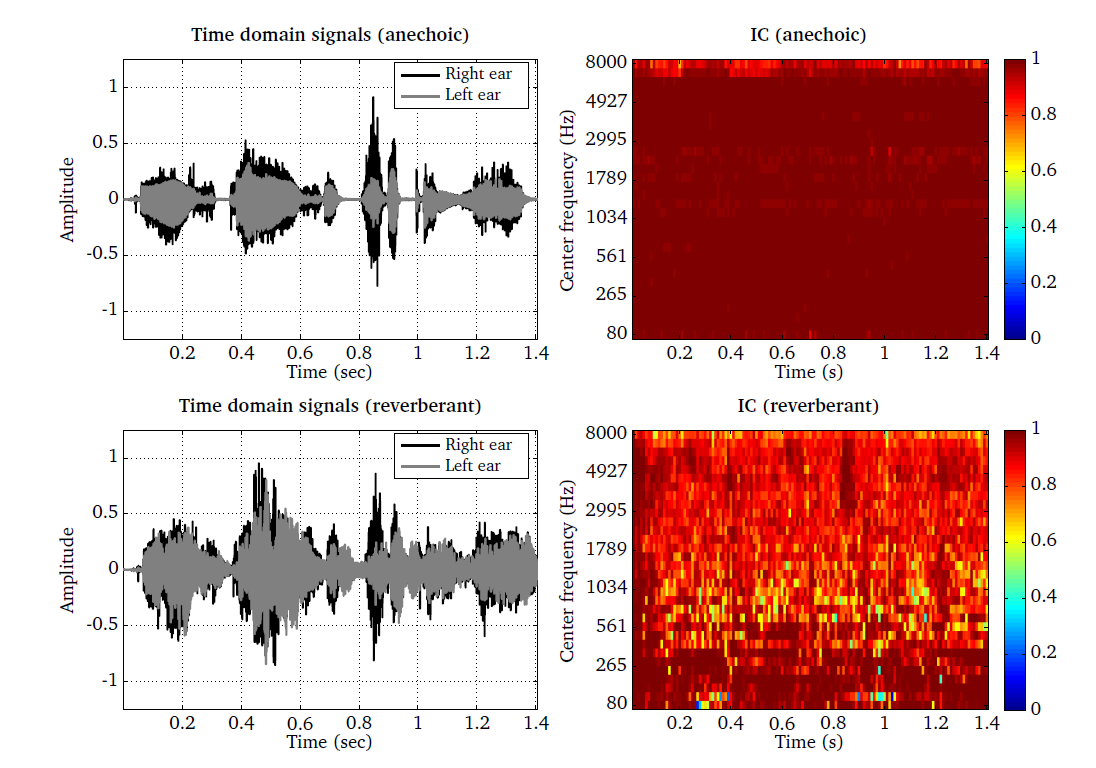Interaural coherence (icProc.m)¶
The IC is estimated by determining the maximum value of the normalised CCF.
It has been suggested that the IC can be used to select TF units where the
binaural cues (ITDs and ILDs) are dominated by the direct sound of an
individual sound source, and thus, are likely to reflect the true location of
one of the active sources [Faller2004]. The IC processor does not have any
controllable parameters itself, but it depends on the settings of the CCF
processor, which is described in Cross-correlation (crosscorrelationProc.m). The IC
representation is computed by using the request entry ’ic’.
The application of the IC processor is demonstrated by the script DEMO_IC,
which produces the following four plots shown in Fig. 41. The top left
and bottom left panels show the anechoic and reverberant speech signal,
respectively. It can be seen that the time domain signal is smeared due to the
influence of the reverberation. The IC for the anechoic signal is close to one
for most of the individual TF units, which indicates that the corresponding
binaural cues are reliable. In contrast, the IC for the reverberant signal is
substantially lower for many TF units, suggesting that the corresponding
binaural cues might be unreliable due to the impact of the reverberation.

Fig. 41 Time domain signals and the corresponding interaural coherence as a function of time frames and frequency channels estimated for a speech signal in anechoic and reverberant conditions. Anechoic speech (top left panel) and the corresponding IC (top right panel). Reverberant speech (bottom left panel) and the corresponding IC (bottom right panel).
| [Faller2004] | Faller, C. and Merimaa, J. (2004), “Source localization in complex listening situations: Selection of binaural cues based on interaural coherence,” Journal of the Acoustical Society of America 116(5), pp. 3075–3089. |